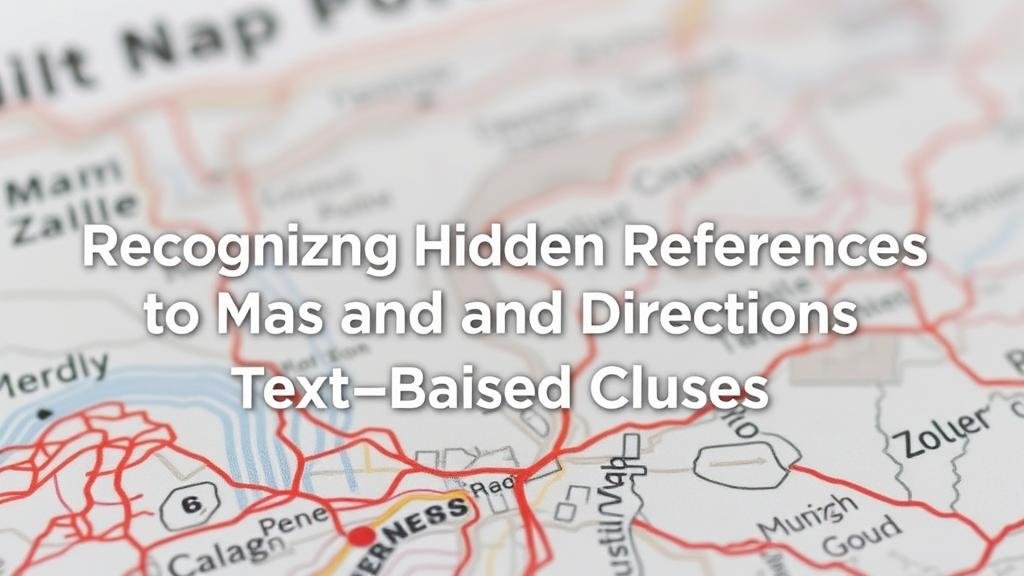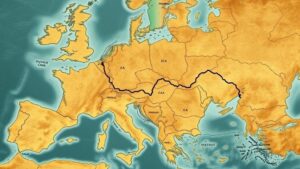Recognizing Hidden References to Maps and Directions in Text-Based Clues
Recognizing Hidden References to Maps and Directions in Text-Based Clues
Understanding how to recognize hidden references to maps and directions in text-based clues is an essential skill across various fields, including literature, cryptography, gaming, and even web design. This article explores the nuances of deciphering hidden directions in textual formats and offers practical tips for recognizing these elements.
The Importance of Mapping in Textual Contexts
Maps and directional clues are not only physical representations of geographic space but also serve as metaphors and frameworks for organizing narrative, information, and even analytical thought in textual contexts. Text-based clues that contain references to spatial orientation can enhance comprehension and engagement.
For example, in literary analysis, locations often symbolize broader themes or character development. In Moby Dick, Herman Melville frequently alludes to nautical directions, which reflect the inner journey of Captain Ahab, merging physical and psychological navigation.
Common Types of Hidden References
Identifying hidden references to maps and directions can be challenging. Below are some common types of these references found in text:
- Metaphorical Directions: Authors may use directional language figuratively. Phrases like northward journey can imply an upward struggle or moral ascension rather than a literal direction.
- Implicit Coordinates: Texts may suggest locations without naming them explicitly, relying on cultural or historical context. For example, the place where the rivers meet can refer to specific geographic sites significant to a reader familiar with local histories.
- Symbolic Mapping: Some texts engage in world-building that requires the reader to visualize and map out mental representations of locations, akin to navigating through a fantasy novel, such as in J.R.R. Tolkiens The Lord of the Rings.
Techniques for Deciphering Clues
When attempting to discern hidden references to maps and directions within text, readers can adopt various techniques:
- Contextual Analysis: Assessing the surrounding text for cultural, historical or personal significance can provide valuable clues. Understanding the setting can often reveal implicit geographical references.
- Visual Mapping: Creating a visual representation of the text can help in revealing hidden directional cues. This method is particularly effective in texts laden with intricate world-building elements.
- Comparative Textual Study: Cross-referencing similar texts can illuminate common themes and symbols. For example, studying multiple fantasy novels may reveal common motifs associated with journeying and exploration.
Case Studies: Literature and Cryptography
Exploring specific examples can sharpen our understanding of hidden references to maps and directions.
In the realm of literature, consider The Da Vinci Code by Dan Brown. The protagonist navigates through a series of clues that reference historical locations across Europe, unveiling a hidden map contained within the narrative and subtext. clues often bring readers on a journey that involves deciphering symbolism tied to real-world geography.
In cryptography, directional clues are often employed in puzzles. For example, scavenger hunts utilizing GPS technology require participants to interpret text-based clues. Such clues typically contain map references, encouraging users to view directions through a digital format. This fusion of digital mapping and textual clues enhances both engagement and cognitive processing of spatial information.
Real-World Applications
Recognizing maps and directional references is increasingly pertinent in todays data-driven world. Applications span various sectors, including:
- Urban Planning: Planners must interpret public feedback, often provided in written surveys, that may contain implicit spatial references affecting zoning trails or environmental impact assessments.
- Education: Teachers can leverage texts that incorporate maps and directions to facilitate engagement and comprehension in social studies or geography classes.
- Digital Content Creation: Content creators utilize location-based references to enhance narrative structures in blogging or game development, ensuring immersive audience experiences.
Actionable Takeaways
To improve your ability to recognize hidden references to maps and directions in text-based clues, consider the following strategies:
- Practice contextual reading by focusing on how location is described within texts you encounter.
- Create visual aids or maps while reading complex narratives, helping to visualize the geographic and symbolic relationships in the text.
- Engage with diverse genres, expanding your understanding of how different authors employ maps and directions creatively.
By honing these skills, not only will you enrich your reading comprehension, but you will also enhance your analytical capabilities, applicable across multiple disciplines–from literature to planning and beyond.


